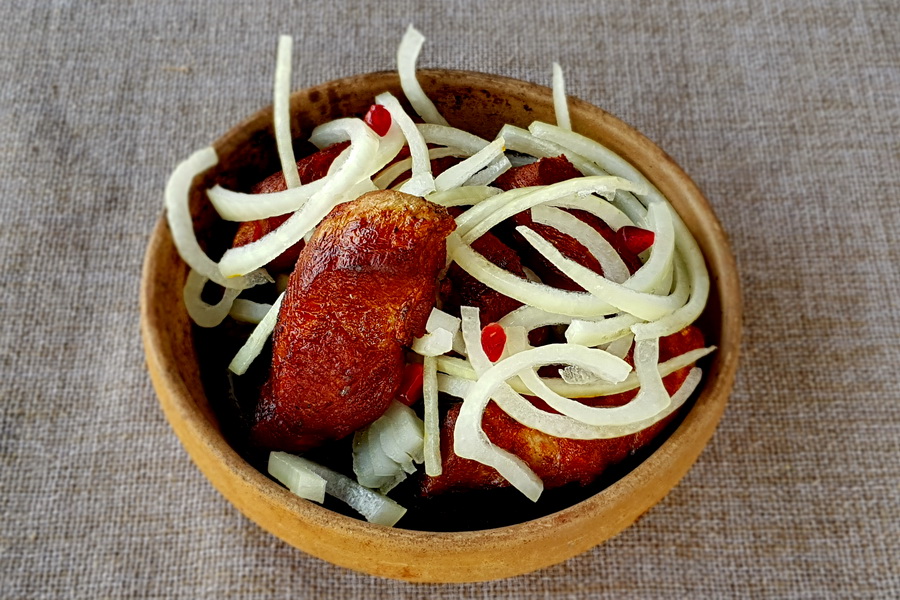
The main feature of Georgian cuisine is the presence of all kinds of meats (unlike in Moslem countries) – poultry, beef, mutton, and pork. Caucasian people love and can cook meat. Such Georgian meat dishes as shish kebab, satsvi, chickens tabaka, chikhirtma and chakhokhbili have long been rated as international. They are cooked in different countries of the world!
The priority in Georgian cuisine is given to meat dishes. There are dozens of recipes!
Satsivi is a cold dish from poultry, chicken or turkey. The name of the dish comes from the original satsivi sauce served with fried chicken. The sauce has more than one and a half dozen varieties. It is prepared from the poultry broth with addition of various spices, seasonings and nuts.
Chakhokhbili are pieces of chicken (or other poultry) stewed in tomato sauce. Prior to this they are fried it a pan without fat. Then tomatoes are added and the dish is stewed in vegetable juice.
The set of spices for chakhokhbili is as follows: parsley, savory, coriander, basil, red pepper, and garlic.
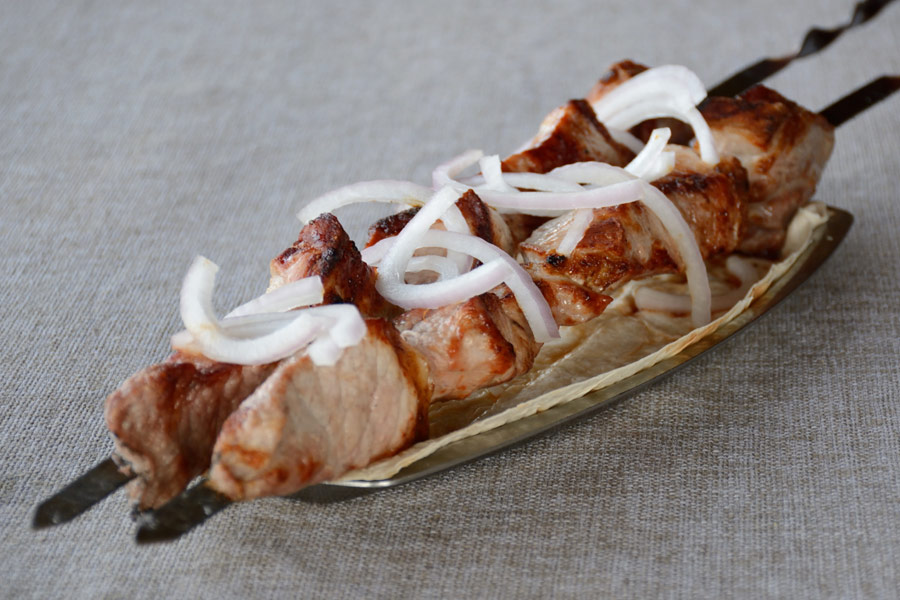
Mtsvadi is a Georgian shish kebab. It is distinguished by special aroma and juiciness. It is cooked mainly from beef. There are three kinds of mtsvadi. The first is a shish kebab from a big chunk of fillet. Then there is a shish kebab from basturma - marinated meat. And finally - a shish kebab from mutton with eggplants. In latter case meat is placed into eggplants and then put onto skewer fried on a barbeque.
Borani is a main course dish combining separately prepared chickens tapaka and a considerable quantity of vegetables stewed separately in matsoni. The set of vegetables is spinach, string beans and eggplants with a lot of spices. Traditionally, the ready vegetables are divided in two halves; one is to put a piece of chicken on it, the other to cover the chicken from top. The dish is then seasoned with matsoni with saffron infusion and cinnamon.
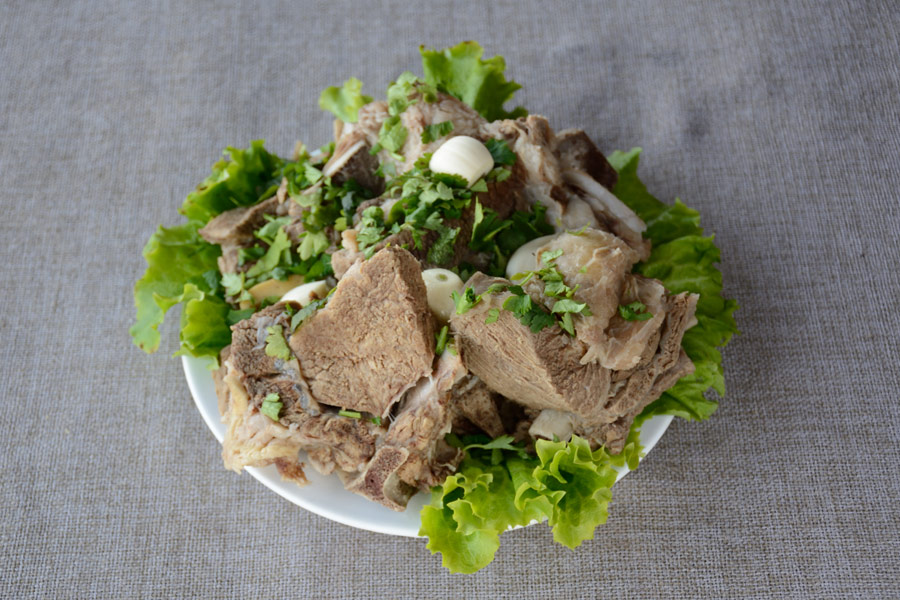
Tolma – Georgian stuffed vegetables. Fragrant forcemeat is put inside eggplants, peppers, tomatoes, and apples to be stewed in broth with spices and basil, parsley, coriander.
Kuchmachi – a hot dish from liver, heart, lung, and tongue served in butter with spices.
Muzhuzhi – a dish from boiled semi-marinated pork. It is cooked from meat a well as legs and tails. Each kind of meat is cooked separately to be used together in the same dish. The dish is seasoned with wine vinegar and served cold with spring onions and greens.
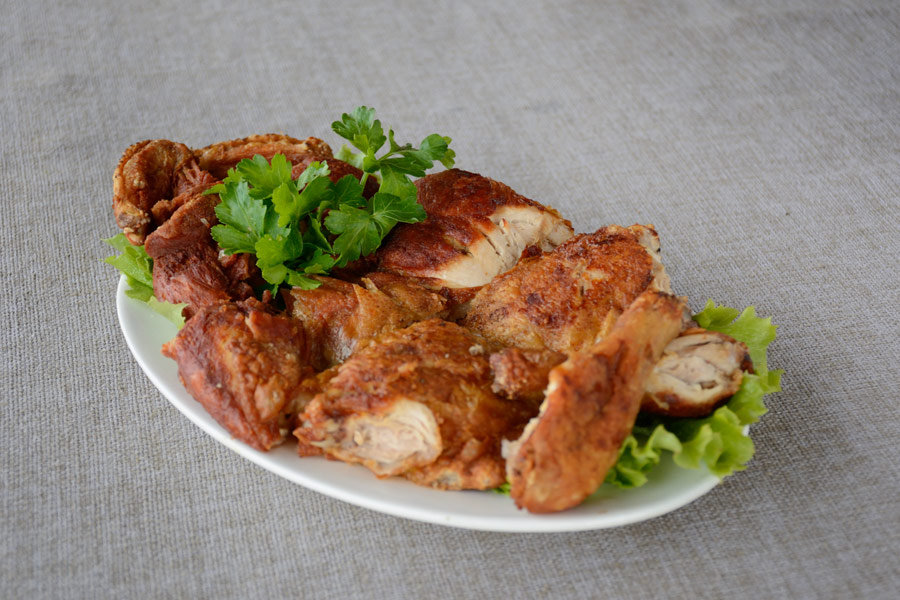
Chicken Tapaka - chickens fried on a wide frying “tapa” pan (hence the name) under cover and load. This dish more often serves as a half-finished product for other dishes of Georgian cuisine, for example for borani. Therefore, tapaka, as a rule, is fried without seasonings, except for salt and red pepper. If chicken tapaka is used as independent dish, it normally is accompanied by crushed garlic and spicy greens (coriander, basil, tarragon, green onions or leek).
Guruli – a chicken fried in oil and stewed with onions, nut sauce and spices – ginger, red pepper, parsley, coriander, cinnamon and cloves.
Kebab – a dish from ground meat. Balls made from fragrant mincemeat are coated with breadcrumbs and stewed in broth with spices.
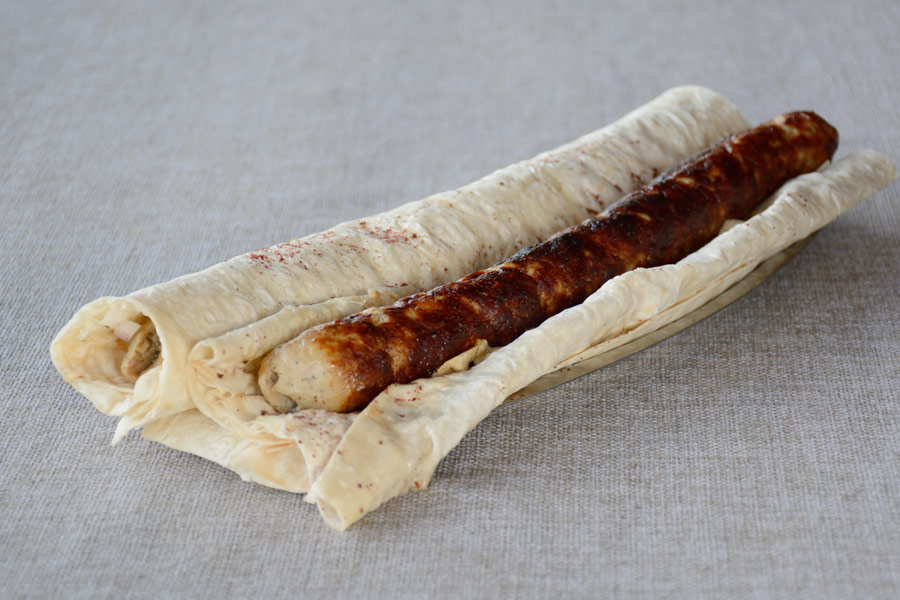
Basturma – is jerked mutton or beef. The meat is richly rubbed with salt and stacked in salted layers within a pan. Then it is left for 21 days. Then the meat is soaked and dried for two-three weeks.
Buglama – mutton stewed with spices. Juicy pieces of mutton are stewed in fat, then chopped onion and broth are added, seasoned with ginger or saffron infusion, garlic, tarragon, coriander, fennel, mint, green cherry plums, salt and pepper.
Chanakhi – meat with vegetables stewed in clay pots in an oven. For chanakhi only fat mutton is used along with eggplants, tomatoes, potatoes, onions. Sometimes they add some rice. You will also need parsley, coriander, basil, black and red pepper.
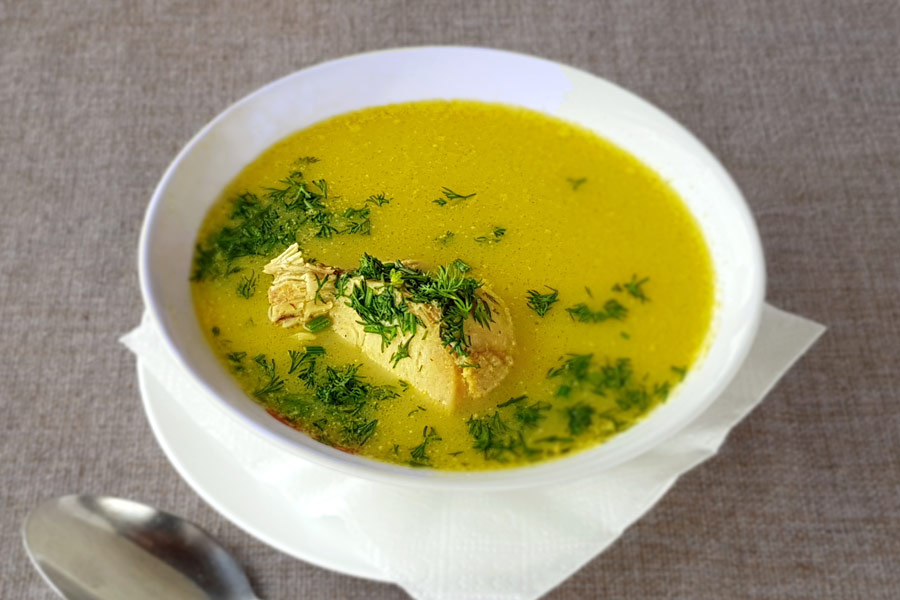
Khinkali – Georgian dumplings. Forcemeat for khinkali is made from mutton or veal. Dumplings are shaped in a special way: pastry rounds (the thinnest possible) are filled with forcemeat and sealed on top with a thick bunch. They eat it with hands holding a delicious khinkali by its top "tail" which is normally not eaten.

